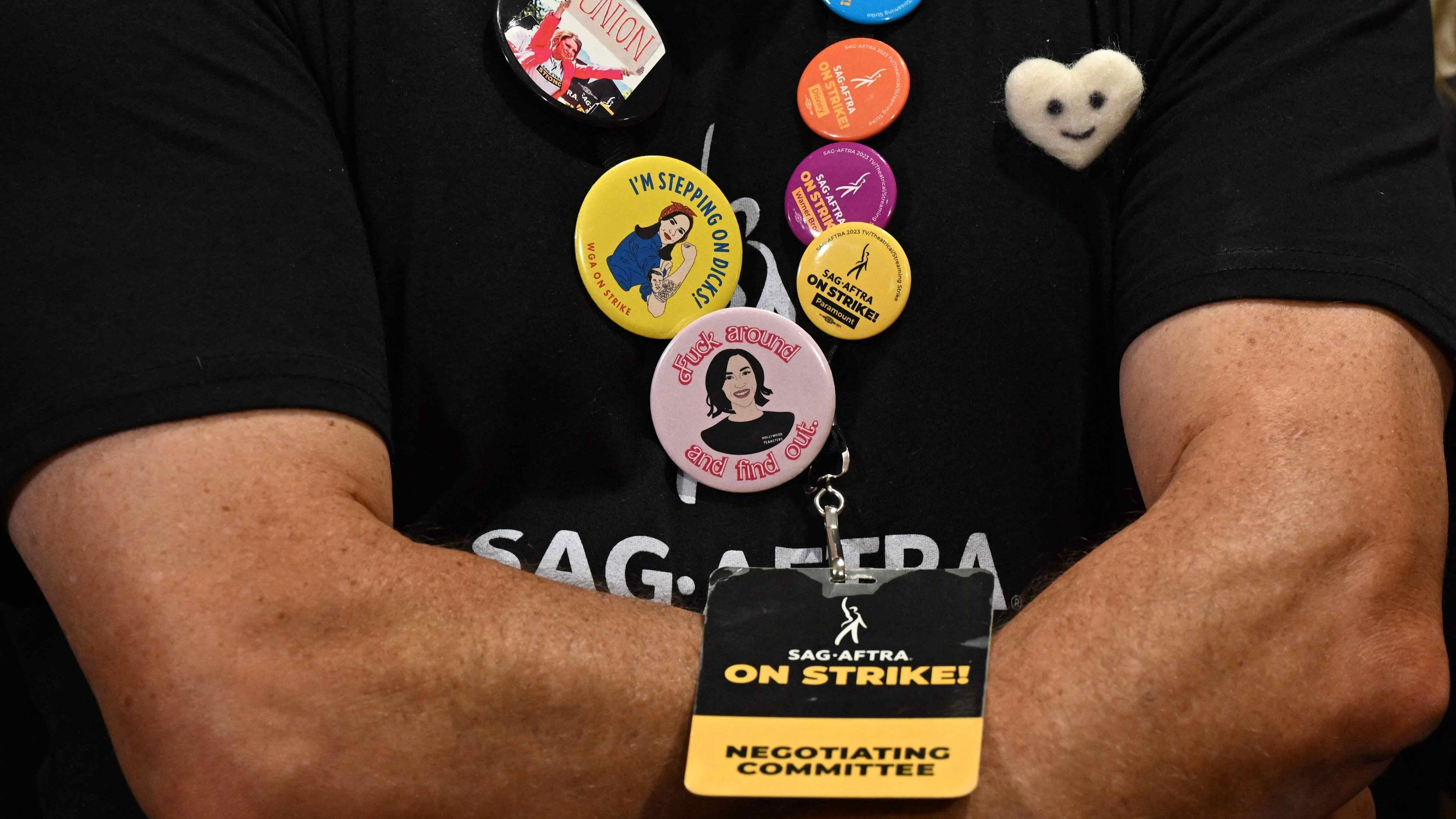Hollywood's labor stoppage is over, but a painful industry-wide transition isn't
NEW YORK

Hollywood’s months of labor unrest are coming to an end, but the post-strike landscape that awaits actors and writers may be far from happy-ever-after.
The film and television industry could rightly celebrate the conclusion Wednesday of a bruising, protracted work stoppage that began in May when the Writers Guild hit the picket lines and gathered more force when Screen Actors Guild-American Federation of Television and Radio Artists members walked out in mid-July.
The strikes were historic in their length and cost, causing an estimated $6 billion in economic loss and leaving hundreds of thousands out of work. As Hollywood on Thursday began rushing back to production and stars again hit red carpets, many were surely still nursing wounds from a bitter feud with the studios, even after a deal that won actors a hefty boost to minimum pay and protections over the use of artificial intelligence.
SAG-AFTRA’s board was to vote on approving the contract Friday afternoon.
But as actors swap their picket signs for audition sides and calls sheets, they’ll be returning to an industry still in the midst of painful transformation and streaming upheaval.
The strikes were prompted largely by the streaming wars, a digital land-rush to populate platforms like Disney+ and HBO Max (now just “Max”) with enough content to rival Netflix. That helter-skelter transition threw much of the economics of entertainment out of whack. One of the most contentious issues of SAG-AFTRA’s negotiations with the studios was the union’s attempt to win a percentage – 1 or 2% -- of streaming revenue, to replace lost residuals. In the end, the actors accepted a bonus tied to viewership.
But even before the strike, every studio was reexamining its streaming strategy. After several years of rampant green lights, most are pulling back, looking to make fewer series and movies, cutting staff and desperately seeking a path toward profitability. Wall Street, no longer enamored of subscriber numbers, wants to see profit, too.
The aftermath of the strike may look less like a party and more like a streaming hangover.
“The streaming business is completely screwed up. There’s too much content and nobody seems to be able to make any profit from it,” says Jonathan Taplin, director emeritus of the USC Annenberg Innovation Lab and author of “The End of Reality: How Four Billionaires are Selling a Fantasy Future of the Metaverse, Mars, and Crypto.”
Both strikes, Taplin says, were successful because the guilds gained bulwarks against potential decimation by artificial intelligence. But the road ahead, during which he expects linear television to collapse and some streaming services to go out of business, will be strained.
“The whole business is in a complete uproar,” says Taplin. “It will sort itself out in the next three to five years, but it’s going to be painful.”
This is the world that awaits actors as they rush back to sets: Better pay but fewer jobs and intense competition. Puck’s Matt Belloni wrote: “What should be a time of relief and celebration in Hollywood is more akin to what soldiers experience in countless war movies — the horrors of battle give way to the equally grim reality of the new world for which they fought.”
Still, the strikes recalibrated power in Hollywood, winning gains for actors and writers and rallying union support throughout the industry. More battles loom. The contract for International Alliance of Theatrical Stage Employees (IATSE), which represents crew members, expires at the end of July.
Meanwhile, for months studios have signaled they’re downsizing. Earlier this week, Walt Disney Co. CEO Bob Iger in an earnings call where he touted the financial benefits of more than 8,000 job cuts, said the company is focused on consolidating: “Make less, focus more on quality.”
“At the time the pandemic hit, we were leaning into a huge increase in how much we were making,” Iger said. “And I’ve always felt that quantity can be actually a negative when it comes to quality. And I think that’s exactly what happened. We lost some focus.”
Netflix, which earlier set its sights on a new original movie every week, has said it’s now aiming for about half that. Hulu, which Disney plans to bundle with Disney+ after acquiring Comcast’s stake, is slimming down. Peacock lost $2.8 billion this year, Comcast has said; it announced layoffs to its marketing department Thursday.
Warner Bros. Discovery chief executive David Zaslav has taken drastic steps to get Max in order while the studio post-merger carries $43 billion in debt.
“This is a generational disruption we’re going through,” Zaslav said Wednesday. “Going through that with a streaming service that’s losing billions of dollars is really, really difficult to go on offense.”
Cancellations have grown more commonplace as streamers get more selective. Due in part to the strikes, series production will dip for the first time in years in 2023 after reaching an all-time high last year, when 599 original series were made. Peak TV, some say , is over.
But there are still huge amounts of money being thrown around. Apple Studios, for one, is behind two of the fall’s biggest budget films in Martin Scorsese’s “Killers of the Flower Moon” and Ridley Scott’s “Napoleon.”
Duncan Crabtree-Ireland, SAG-AFTRA’s lead negotiator, remains optimistic about what’s ahead.
"I recognize that during a strike, sometimes rhetoric gets heated. People sometimes say things with the intention of sort of generating a reaction,” Duncan Crabtree-Ireland said Wednesday. “And so I think really we will see over the coming days, weeks and months what the industry’s real intentions are. But my expectation is that they do really want to get people back to work and that they’ll do so.”
















